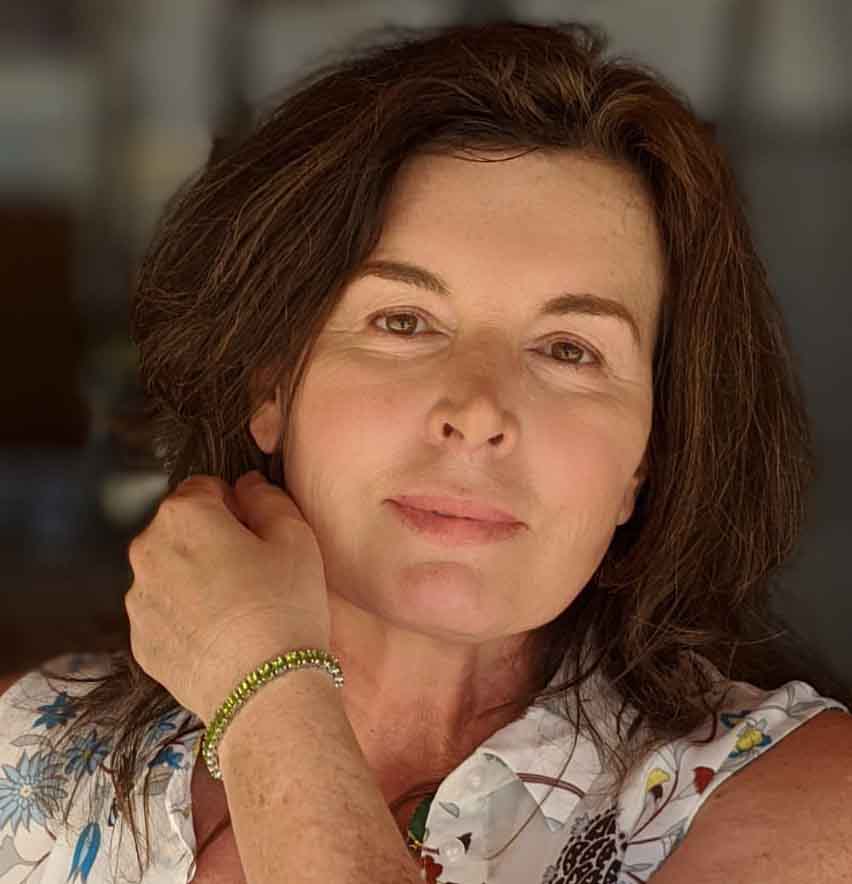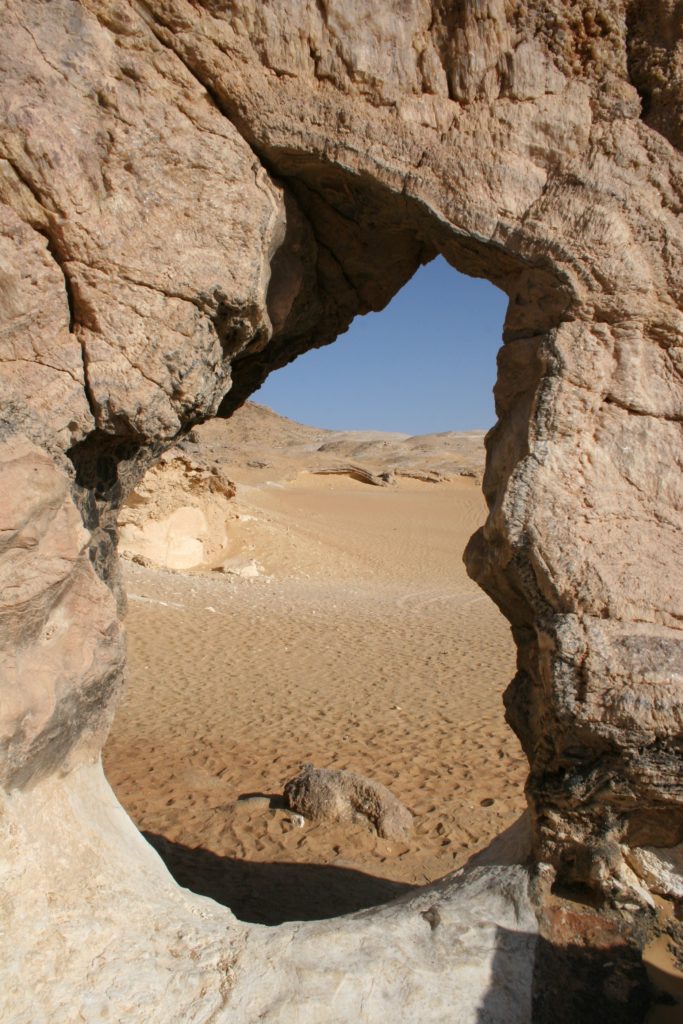
Lurching over the shifting sands of Pharoahs’ lands
Egypt’s heat hovers like a lovelorn drunk breathing pungent fumes over everyone in its proximity. Respite in our air-conditioned hotel room at Ains Soukhna on the Red Sea – odd name when the water’s blue – is temporary. Open your door and the sun greets you like a hound on the hump.
Filled with enthusiasm, I’d agreed to set off with my husband into the desert southwest of Cairo that continues for thousands of miles across Libya and the great Sahara. In a 12-hour drive each way, we would visit first the Black Desert and then the White, famous for its snow-white inselbergs – mushroom-shaped structures that exist on other planets but few places on earth. Scientists study them to better understand Mars.
We stopped at Bahariya, a sun-scorched little town on the southwestern desert highway. Around five hours by bus from Cairo, it promised an oasis and hot springs. Yeah. No way was I dipping a toe in the “hot spring pool” at the Beshmo Hotel where we spent the night swatting mosquitoes. Apart from brown bits of dubious origin floating in the browner water, the surrounding sand served as a lavatory for the ubiquitous stray cats.

Some of the town dates back to the Roman era, and few renovations have taken place since, judging by the crumbling mud structures. Here and there stunted palms rose from the parched earth like drowning hands. Children peeped out from behind doors that rasped on rusty hinges as sagging donkeys plodded down the dusty streets and goats rooted among the rubble.
My husband and I left the turgid town for the nearby oasis of lush groves interlaced by streams. Here farmers grow fresh produce on land made arable by the oasis water supply. We plucked sun-ripened dates straight from the palm trees and admired flocks of egrets flying in and out of the foliage like crisp white napkins.
From Bahariya, 4×4 vehicles replaced our air-conditioned bus. These were driven with lethal abandon, providing rollercoaster excitement, heart-in-the-mouth palpitations, slipped discs and wrenching heartfelt prayers from the staunchest of atheists among us.
Thus we set off for the Black Desert, which takes its name from the pebbles of iron pyrite sprinkled like burnt toast crumbs on the surface, the results of volcanic eruptions thousands of years ago. The barren, Soddom and Gomorrah blackened landscape brought a renewed respect for Moses and the Israelites who spent so many years prancing about such inhospitable terrain.
Our driver coaxed our hyperventilating Land Cruiser up the sand dunes, but it soon wheezed to a standstill and he suggested we climb out to ease the weight load. As I tottered towards the top the wind accosted me like a street vendor, plucking at my clothes and ruffling my hair but I gratefully grabbed lungfuls of air to counteract the 4×4 fumes.

Back in the vehicle we lurched over the shifting sands until we came to the crystal mountain, which marks the end of the black desert and the start of the white one.
It is, in fact, an exhumed cave – complete with stalagmites and stalactites – thrust upwards by earth movement. Over time, it lost its roof to erosion. Calcite and quartz crystals glitter on its surfaces and lie scattered around it; a veritable treasure trove for geologists and New Age flunkies alike.
Another 40 kms and fantastic 50m high rock formations pierce the firmament. In the fading light of dusk, it feels like we’ve arrived on another planet or a sci-fi film set. If you’ve ever wanted to know what lies at the back of beyond, this probably is it, a place like nowhere else on Earth. Winds over millennia have tortured and sculpted these silent sentinels into surrealistic shapes, lending the landscape a macabre and dramatic beauty, like icebergs in a sea of sand. Indeed, this desert was once a pre-historic fresh water ocean. We find coral and numerous mussel shells embedded in the limestone walls.
It was here that we settled down for the night. Our Bedouin guides lit a fire to cook our supper – chicken breasts with pitta bread and cucumber that we ate with our hands, reserving the bones for the desert foxes lurking behind the rocks. How they manage to survive in such arid circumstance is nothing short of miraculous.
After supper our guides banged on a drum and the dancing begun. We clapped them on in the skittering firelight. Like the foxes, the Bedouins can survive for years with just their camels for company in the harshest terrain, bowing only to Allah and the crescent moon.

We came across one such character the next day, making his way across the scorching sands in the middle of nowhere. To prevent his camels escaping he had tied their front legs together, clearly of the old “trust in Allah but tie up your camels” school.
Shunning the tents in favour of a sparkling celestial canopy, my husband and I climbed into our sleeping bags out in the open, gazing up at the diamond-encrusted sky, counting so many shooting stars we ran out of wishes! Peter soon fell asleep but I lay awake all night, alternately shivering – the desert freezes at night – and shifting on the hard sand. However since he had brought me here on condition I did not complain, I (mostly) kept my own counsel.
Watching the waning moon’s late arrival like the guest of honour at a star-studded party, I pondered on other exodus journeys through the desert of lost opportunities and hardships before a yawning dawn palmed the celestial jewels swiftly as a pickpocket, bathing the landscape in pinks and mauves. It was time to prepare for the new day.
As I crept behind one of the inselbergs to spend a penny, I was dismayed to see lavatory paper and other debris including cigarette butts dotting the sandscape.
If there is any silver lining to the current Covid-related travel restrictions, it’s that careless tourists and their profit-driven enablers are prevented from continuing to disrespect Earth’s natural resources.